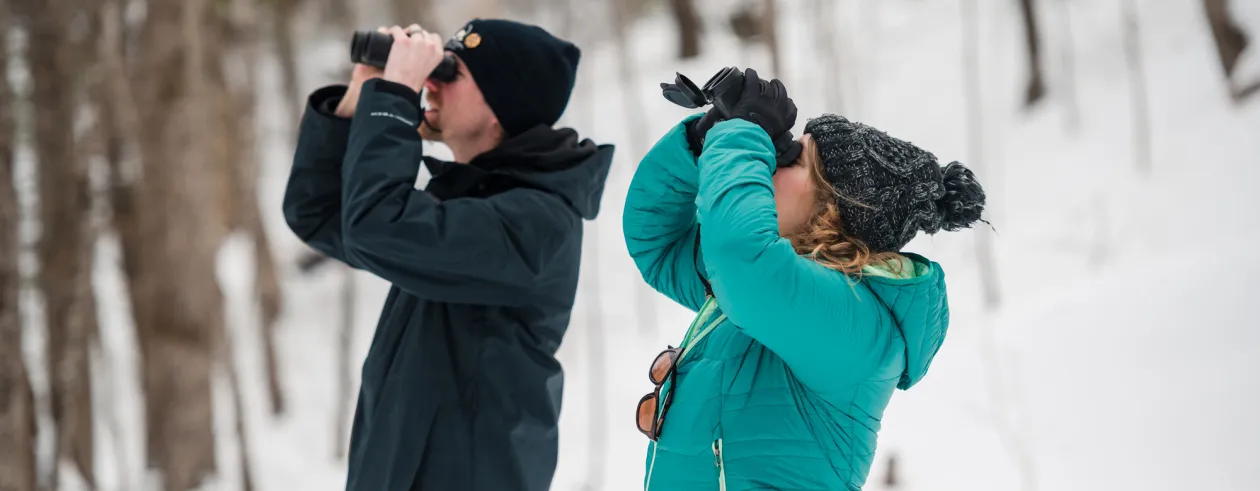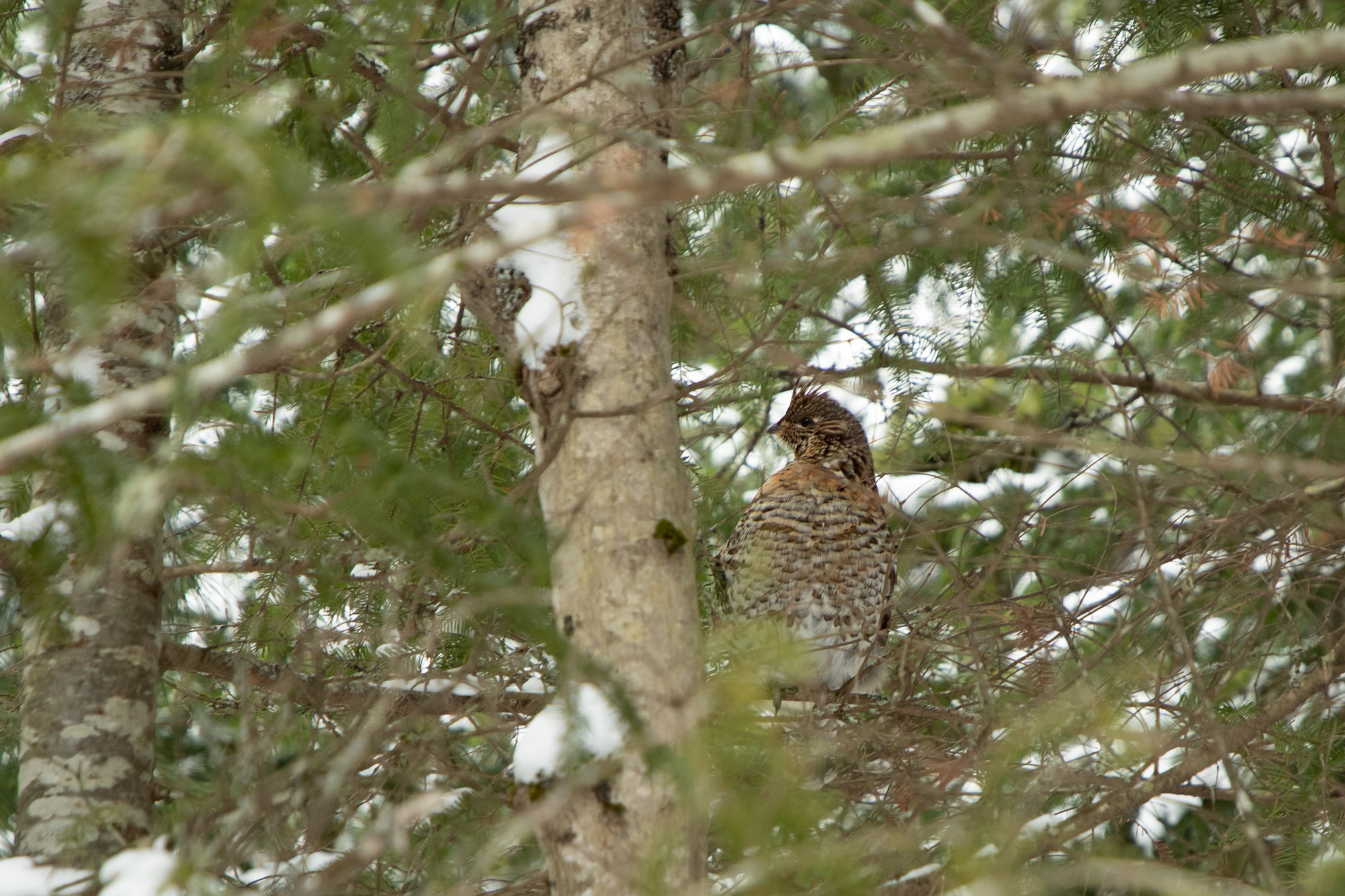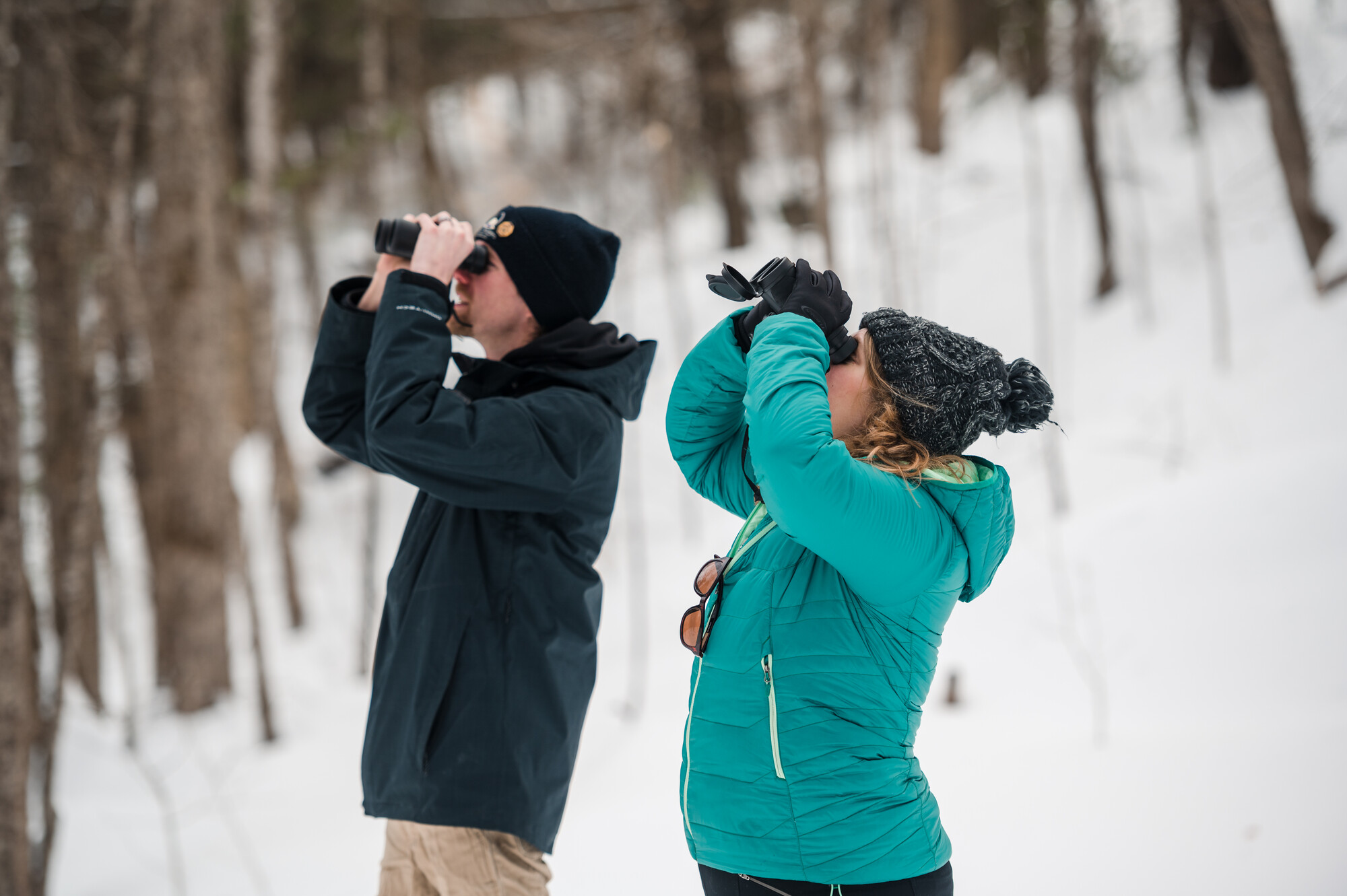
Winter is arguably the best time of the year. There are endless activities to keep the winter blues away and, honestly, who doesn’t love a warm cup of hot cocoa at the end of the day?
Believe it or not, even birding can be done in the snowy months. For those of us who spend a lot of time outdoors with binoculars pressed against our face, always searching for birds, winter can be challenging. Winds and cold temperatures don’t really invite us to stand still for very long (birding is an art of patience), and many bird species have migrated south for the season. Let’s face it, sunshine and Florida do sound nice, but some birds stay in the Adirondacks year-round. Hearty boreal (another word for northern) species, like Canada Jays and Spruce Grouse, and friendly-avian friends, like Black-capped Chickadees and American Goldfinches, don’t pack up and leave when the winds blow cold. The diversity of bird species might not be as abundant in winter, but that doesn’t make it any less exciting to go birding.
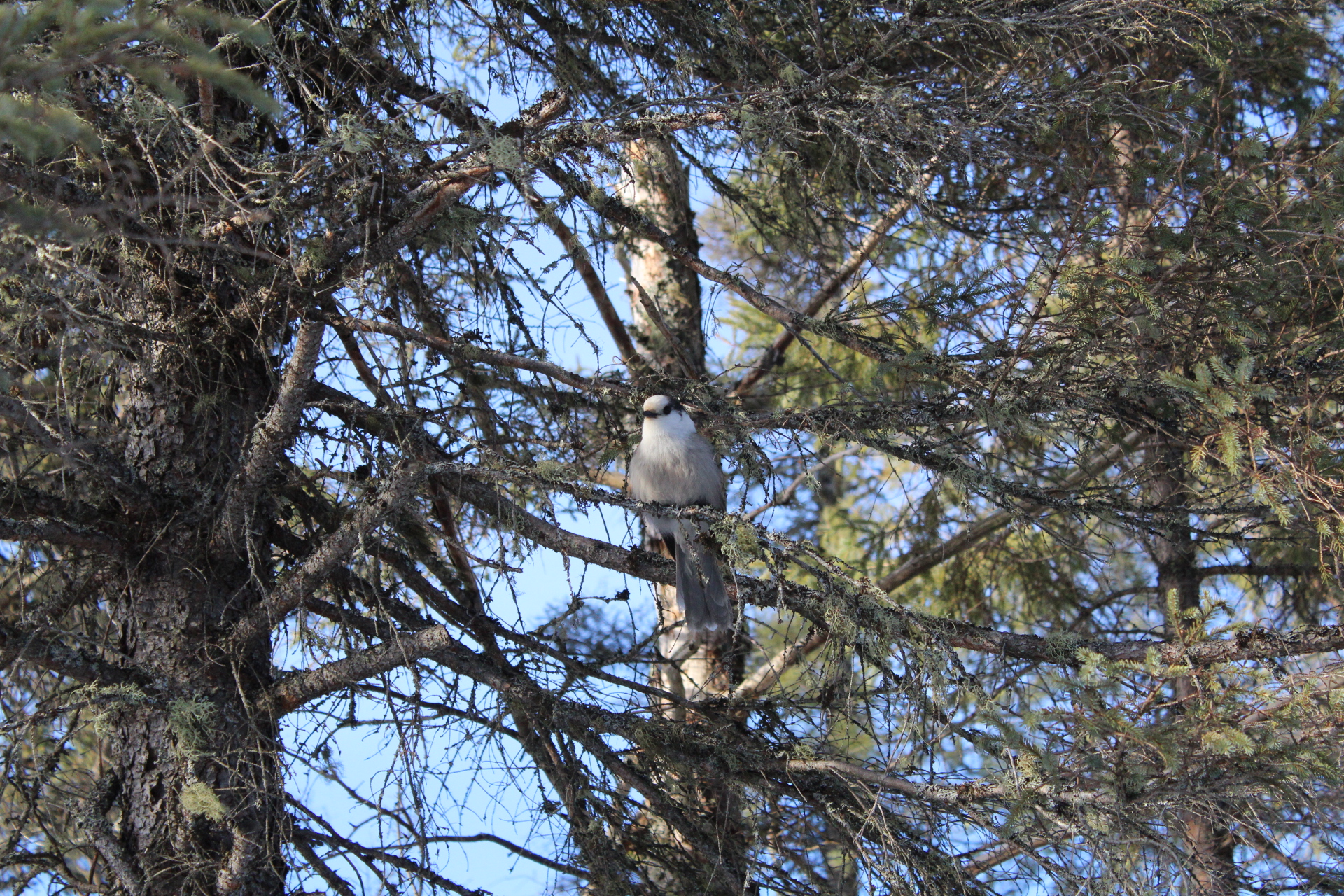
Here are a few tips on how to make the most out of winter birding in Tupper Lake.
Combine activities
Recently, a friend and I decided to spend a day in Tupper Lake, shopping in the morning and spending the rest of the day outdoors. I wanted to go birding, but my friend isn’t as much of a nerd as I am, so we decided to go cross-country skiing instead. The joke was on my friend because my motto is “A.B.B. - Always Be Birding.” By definition, birding is the act of enjoying wild birds, so it can be done anywhere, anytime, coupled with any activity! To my dismay, we did end up skiing more than birding; in the 4 hours we were outside, we only saw one Hairy Woodpecker and heard a handful of chickadees). The lesson: you can be birding while skiing, snowshoeing, or even snowmobiling if your eyes are fast enough. Don’t limit yourself to one activity!
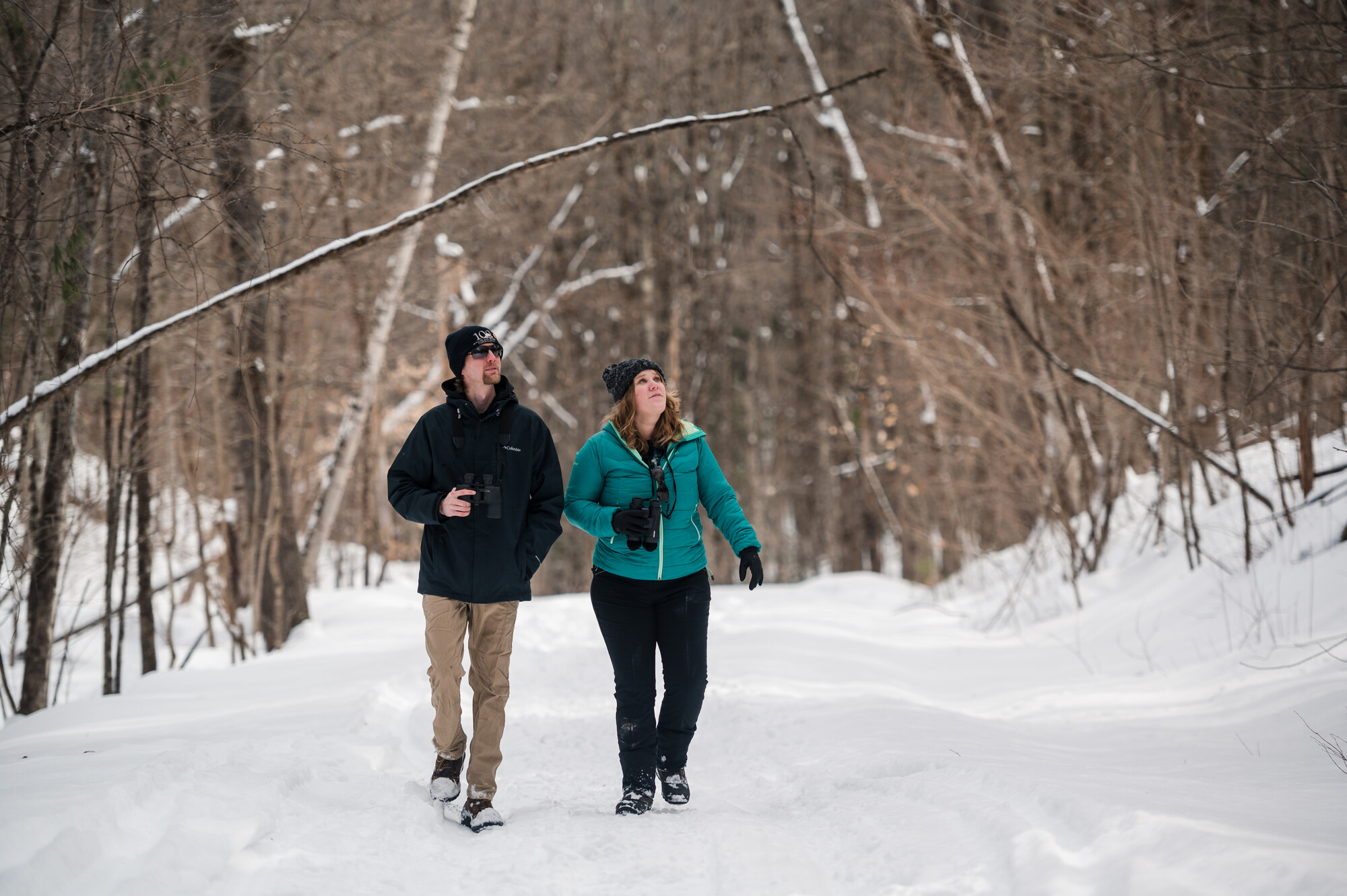
Pro tip: to combine scenic winter drives with one of the best birding locations near Tupper Lake, check out Sabattis Bog. You don’t even have to go outside! Sabattis Bog is located on Sabattis Road, and is some of the best car-birding around. Just roll the window down a little bit and listen for the chirps coming from the surrounding trees.
Study
No, you don’t have to go back to school, but your best chances of seeing interesting winter birds is by studying. Some species only venture south into the Adirondacks if the food crop is good for the winter. An “irruption” is a sudden shift in population numbers for an area. Some irruptive species are: Pine Siskin, Pine Grosbeak, Evening Grosbeak, Common Redpoll, Red Crossbill, and White-winged Crossbill. These species don’t show up every year, but when they do, you don’t want to miss the show! The Finch Research Network puts out a “forecast” each year predicting the movements of irruptive species based on their food sources. With the Adirondacks being such a hot spot, the area is often highlighted in the forecast, which can help you decide where to look for birds and when!
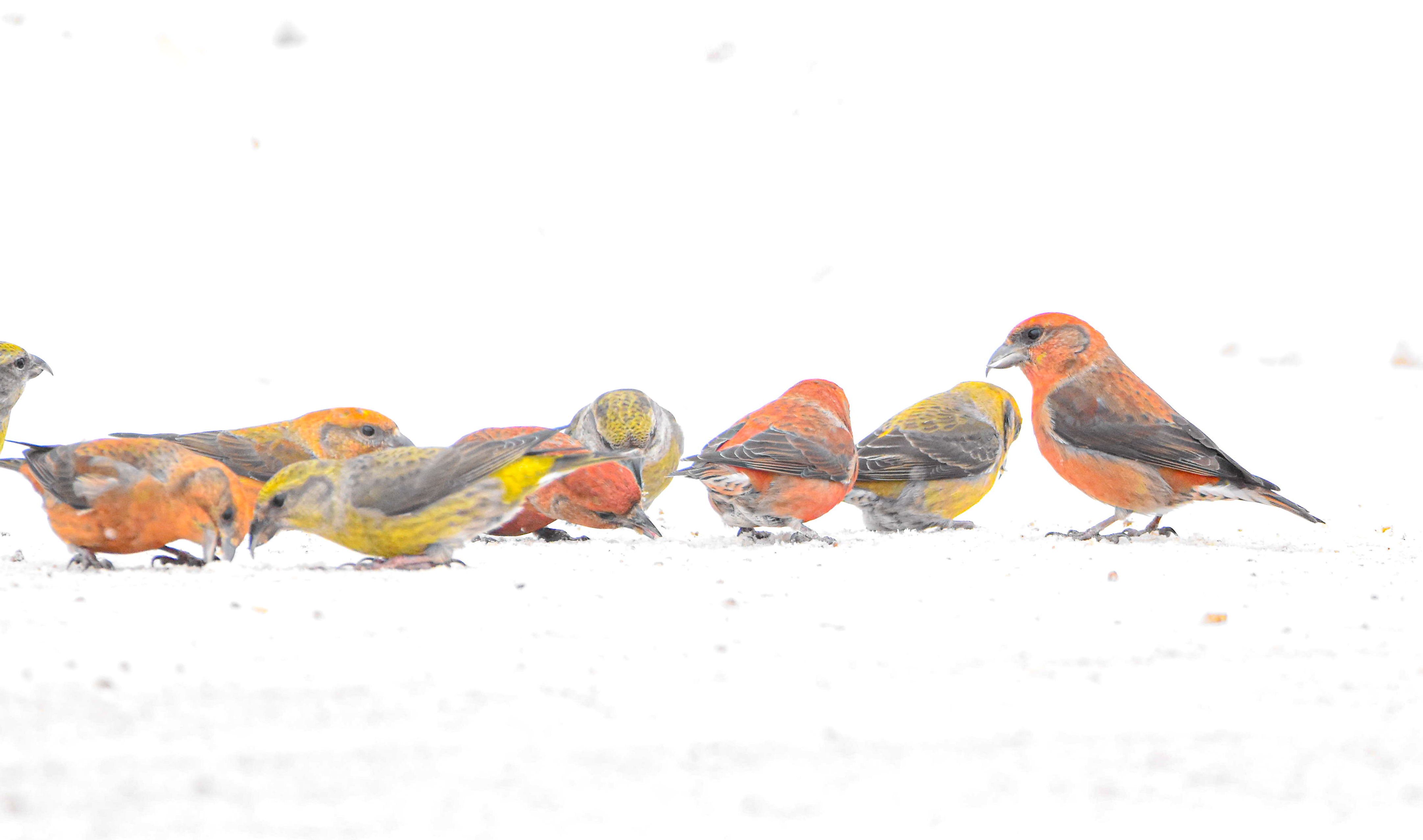
Keeping tabs on recent bird sightings in the area can also help you find cool birds! In 2017, a rare visitor from the Arctic stopped by Tupper Lake. How neat is that?
Where to go and what to see
Here are some good places to try birding near Tupper Lake this winter:
- Paul Smith’s College VIC
- Sabattis Bog
- The causeway between Simon Pond and Big Tupper Lake
- The Wild Center
Birds of a feather
So, the list of birds you might see in winter will likely not be as large as spring, but it’s just as fulfilling. Plus, the winter woods are peaceful and relaxing.
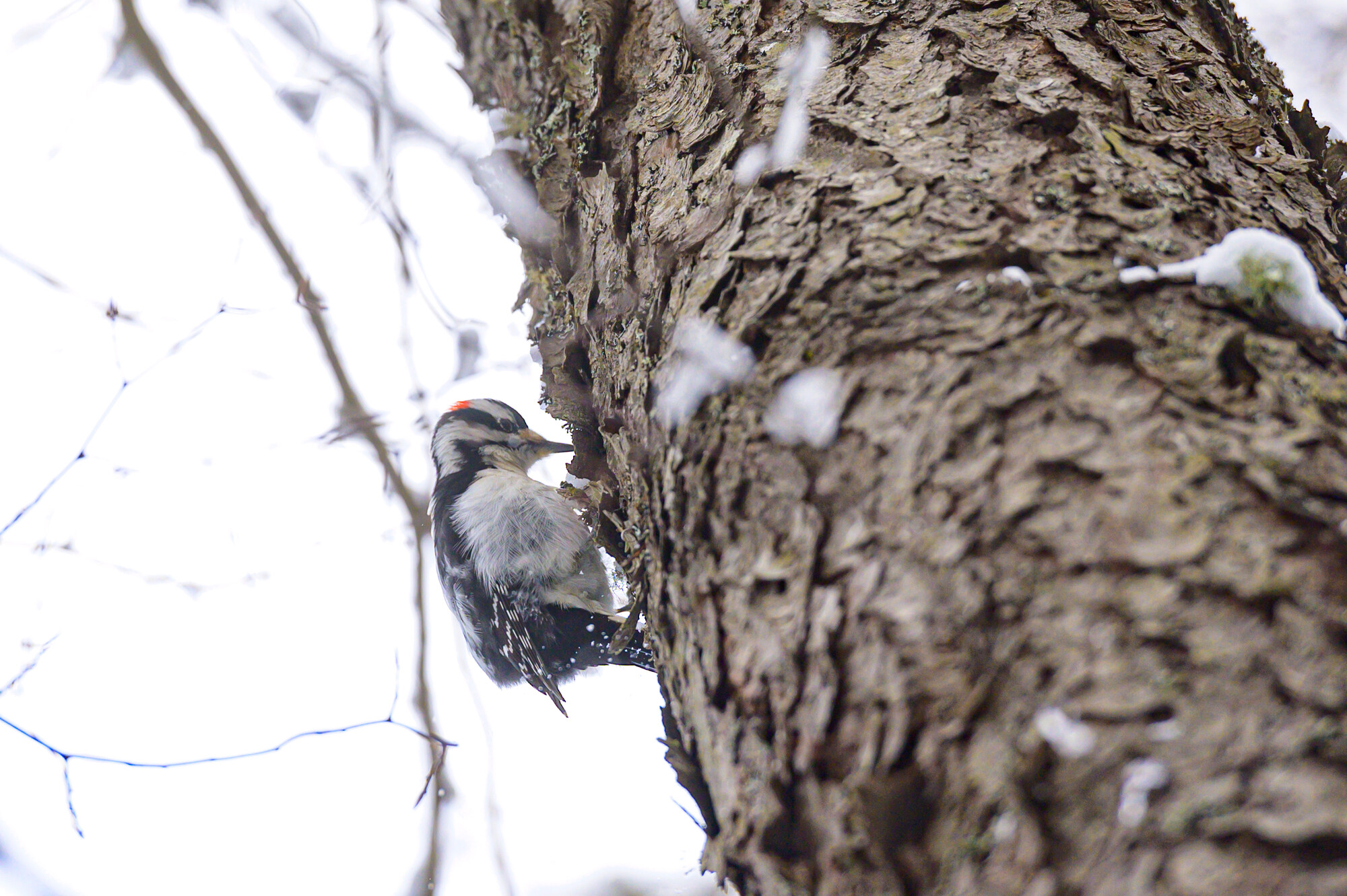
If you need more persuading on why to go birding in Tupper Lake, here are two additional reasons: Saranac Lake and Lake Placid. Together, the Tri-Lakes form a wonderful trifecta of year-round birding opportunities. With Tupper Lake as your basecamp, you can dine, stay, and shop in town, and then head outdoors for a great Adirondack birding adventure.
